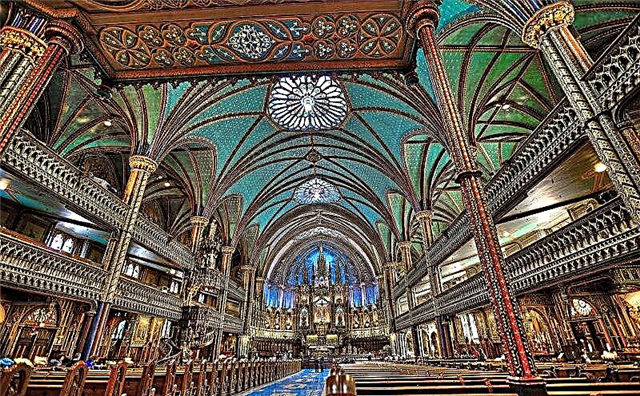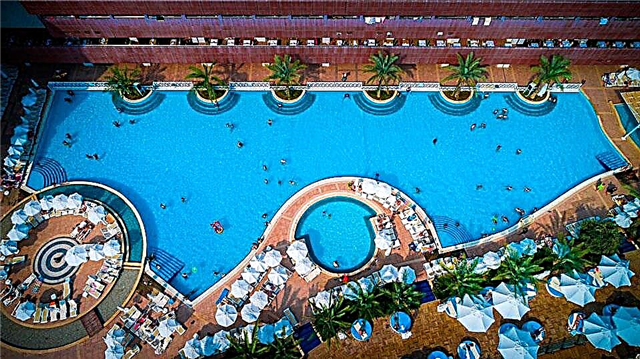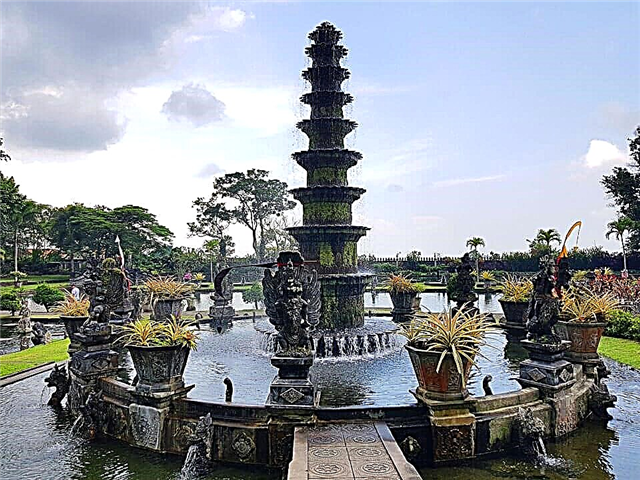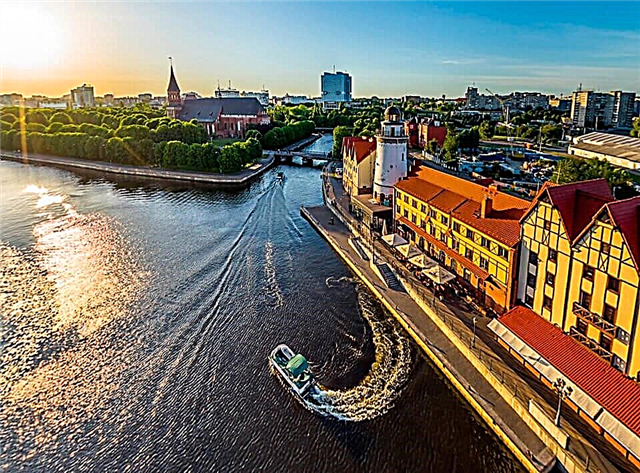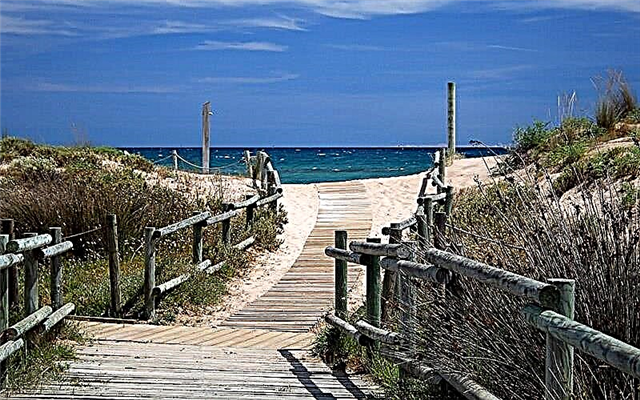Costa Dorada is an area of the Mediterranean coast of Spain, stretching 200 km along the sea. The beaches of the resort are completely covered with golden sand, which is why the area received such a name, which is translated from Spanish as "Gold Coast". The magnificent beaches and clear sea annually attract tourists from all over the world here, although only three decades ago, only artists visited this resort area in search of inspiration, and only residents of Spain rested here. Let's talk about the most interesting sights of the Costa Dorada.
Port Aventura

Gradually, the resorts of the Costa Dorada gained popularity not only due to beach holidays, but also due to numerous local attractions, among which the PortAventura amusement park is one of the first places in terms of attendance. On its vast area of about 117 hectares, there is a huge lake, and among beach clubs, upscale hotels, a water park and excellent golf courses, more than 40 various attractions attract both adults and children most of all. The most popular entertainment complex in Spain includes six themed sections, introducing visitors to certain exotic countries from different parts of the world.
One of the six thematic zones of the park belongs to the fabulous Sesame country. Walking through the territory of the entertainment center, visitors at the same time make a fascinating journey "around the world". In a short time, they have the opportunity to visit North America in the Wild West and Mexico, in the south of Europe in the Mediterranean, as well as visit China in Asia and get acquainted with Polynesia in distant Oceania.
Mediterranean

In the park area "Mediterranean", the high-speed roller coasters of the "Furyus Beiko" attraction are especially popular among visitors, where the speed increases to 135 km / h in just 3.5 seconds. Extreme boat races accompanied by colorful fireworks are often organized on the lake within the "Mediterranean". Most tourists prefer to travel around the amusement park on a ship designed for this purpose from a specially equipped dock "Mediterranean".
China

In the zone "China" visitors are interested in the attraction "Shambhala", which makes it possible to ride the highest roller coaster up to 76 meters in Europe.
Wild West

Tourists wishing to fully experience the cowboy spirit should visit the territory of the park called the "Wild West". In addition to shooting a pistol in a shooting gallery stylized as a cowboy saloon, here you can ride on the unique train "Crazy Worm", which moves along unusual rails made of wood, making sharp turns, then descending, then rising. In addition to the adrenaline rush received while riding this attraction, here you can make a downhill ride along the water stream of the Silver River, using improvised tree trunks instead of boats.
Polynesia

Visitors to the "Marine Odyssey" attraction in the "Polynesia" zone will be able to visit the underwater marine laboratory and get acquainted in detail with the underwater world of the ocean. During the water entertainment show, called "Tutuka's Flash", its participants feel like they are in the mouth of a volcano, from which they rush down into the lake at a speed of about 50 km / h.
Mexico

For thrill-seekers in the "Mexico" zone, there is an attraction "Flight of the Condor", the visitors of which have the opportunity to experience the effect of free fall from a height of 100 meters. During these minutes, a person's stomach contracts to the minimum limits and breathing is literally interrupted. In "Mexico" there is a labyrinth of various attractions in the "Temple of Fire", where its visitors become participants in an exciting and frightening fire show.
Sesame

The Sesame zone is for kids. Here they will be able to chat with their favorite cartoon characters and take pictures with them near the huge Magic Tree, as well as ride various slides and carousels.
Maritime Boulevard Jaime

Not every seaside town has a boulevard on the waterfront. However, this statement does not apply to the sea boulevard Jaime stretching along the famous Levant beach in Salou. Jaime I - King of Spain, who ruled the country in the 13th century and became famous as a conqueror king.
It is no coincidence that the pedestrian part of the boulevard is lined with a mosaic depicting the coats of arms of aristocrats who personally supported Jaime I in campaigns to the islands that later became Spanish territories. Grateful Spaniards erected a monument to their king in the center of the boulevard in 1965 as a token of gratitude for his services to his people. The boulevard is famous not only for the fact that it bears the royal name, but also for its grandiose size, which has no equal on the entire Mediterranean coast. Jaime Boulevard stretches along the sea coast for more than 1 km.
Gaudí Center in Reus

Another attraction on the Spanish gold coast is the Gaudí Center in Reus. Located on the market square of this old town, the building was created by modern architects who inherited the Art Nouveau and Art Nouveau styles of architectural art from the Catalan architect Antoni Gaudi. There are no usual exhibits in this multimedia museum. Everything here is created with the latest audio and video technologies.
On the second floor, the glass floor acts as a computer monitor with a map of Barcelona. Buildings designed by the famous Spanish architect are marked on the map with special signs. As soon as the visitor swipes his foot across the floor near the object of interest, a corresponding film appears on the wall screen. Tourists are also interested in the mirror cinema, where a film about Gaudi is constantly broadcast. Sitting on swivel chairs, visitors can follow the film shots that "roam" around the cinema, appearing unexpectedly on the floor, then on the wall, then on the ceiling.
Roman aqueduct

Lovers of antiquity will be delighted with a visit to the ancient Roman aqueduct located near Taragona. With the help of this ancient aqueduct, water in ancient times was supplied to the city from the Francoli River. The aqueduct is 220 m long, and the narrow trough, through which water once flowed, is at a height of 27 m.
In the Middle Ages, this kind of aqueduct fell into disrepair and soon the inhabitants of the surrounding area forgot about its purpose, and because of the location of the aqueduct over the abyss, they called it the Devil's Bridge. Built during Roman times, this aqueduct is on the UNESCO heritage list.
Amphitheater of Taragona

The amphitheater recently discovered by archaeologists also belongs to the Roman heritage of Taragona. In those distant times, the residences of the Roman emperors Augustus and Hadrian were located in Taragona. Naturally, the patricians in those days entertained themselves with the eerie spectacles of bloody battles between gladiators, both among themselves and with wild predators. Naturally, these "fun" took place in the open air on the territory of the amphitheaters built for this purpose.
The Taragona amphitheater was built in the II century and could accommodate about thirteen thousand people. Despite the fact that the amphitheater was built in such an ancient time, the stands, arena and the main gate are well preserved on its territory. During the persecution of Christianity, the arena of the amphitheater became the place of execution of priests. In 259, Bishop Fructuosa was burned here at the stake.Since then, every year on January 21, the Tarragonese have lit candles in all churches to commemorate his martyrdom.
Cathedral of Santa Maria

In the historic center, at the highest point of Taragona, is the city's main temple and the largest cathedral in Catalonia, the Cathedral of Santa Maria. This cathedral was built from the XII to XIV centuries. Perhaps that is why a mixture of Gothic and Romanesque styles can be traced in its architecture. Interestingly, the construction was originally conceived as the construction of a fortress. However, the protracted construction and high financial costs ultimately led to the construction of the cathedral. 15 bells are installed on the high bell tower of the cathedral. Among them there are those that were made by ancient craftsmen back in 1313 - 1314. These bells are among the most ancient of all European churches.
Santes Creus Monastery

Since the 12th century, the Santes Creus Monastery has been considered the cultural center of Spain, since its patrons were the reigning persons of Catalonia. Until the 19th century, monks lived here, but their lands were taken away from them and soon the monks left the monastery. There are no decorations in the monastery hall intended for monks. The monks in it once slept right on the floor. Today, thanks to its excellent acoustics, the monastery hall is used for chamber concerts. This monastery is also famous for the fact that King Jaime II of Spain is buried here.
Ebro Delta

Anyone interested in wildlife should visit the Ebro Delta, where the river flows into the Mediterranean Sea. Here, on an area of 7 thousand hectares, migratory birds live, many of which are rare and endangered species. In the delta, there is plenty of space for 400 species of fish, which, if you wish, can even be caught with your hands. Since 1983, the territory of the delta has acquired the status of a nature conservation area, which is famous not only for the species diversity of fauna, but also for sand dunes, tropical vegetation and wonderful beaches, which are annually awarded the Blue Flag. Therefore, Catalans and many tourists prefer to rest in the picturesque Ebro Delta - the most beautiful place on the Costa Dorada.




